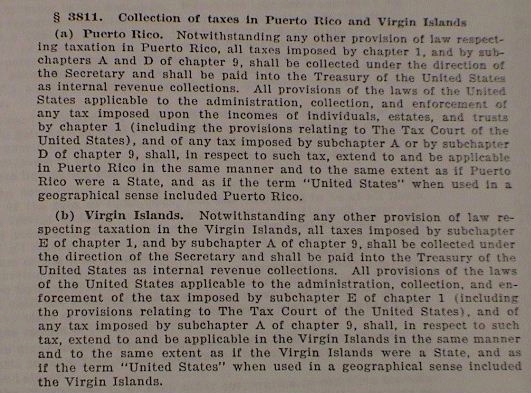FATCA is the FINANCIAL ACCOUNT TAX COMPLIANCE ACT which is a draconian attempt by the US based cabal to extort servitude from all banks worldwide and to enlist them as conscripted agents and spies on US citizens' financial activity worldwide.
So long as the US dollar has been the global reserve currency, all banks worldwide which deal in the USD would have a 'correspondant bank relationship' with a major US Bank in the USA to clear their USD wire transfers through.
FATCA, in short, was legislation which required all banks globally to file reports, as unpaid agents, on any and all foreign accounts held or managed by clients with a US passport. So, you might ask, how does a legislative body in one country impose its will upon another sovereign nation? Simple. Failure to comply would thus require the US correspondant banks to then automatically withhold 30% of all money transfers of the foriegn bank, going through the U.S. correspondant bank. If this were to happen, it would be the death of that foriegn bank. Nobody could tolerate the 'retention' of 30% of all gross transfers.
So what is the result? There are two results we see in operation now in banks around the world.
Result #1: If you hold a US passport and want to open a bank account, investment account, or any financial account the bank or investment house will have you fill out IRS compliance forms for U.S. Citizens. That's right. To open a foreign account in Singapore, you will be filling out IRS papers which the bank will use to report your activity on the account.
Result #2: The simplest thing to do for these banks and investment companies is simply not to accept any clients who hold a US passport.
So we see now, how FATCA is one powerful sheep dog keeping the sheep in the pen without straying.
As always, there are ways of dealing with this. Those are explored in the International Business Module which you'll find in the Members Forum.
Here's an interesting article on the subject. Click Here
SARS
You likely know about 'Suspicious Acitivity Reports' by now. These are the reports filed by your bank teller which go to the U.S. Treasury, or more specificially FINCEN (Financial Crimes Enforcement Network) whenever they 'sense' a transaction which is 'suspicious' or even 'potentially suspicious'.
Bank tellers and other bank personnel are trained to err on the side of caution, which means to file these reports more often than not, to avoid being heavily sanctioned by the Fed for letting something slip under their nose without snitching about it. Bank employees can easily and quickly be fired and/or fined and the banks themselves stand to incur heavy fines if they don't go over the top with the SARS filings.
When the SARS law was first enacted, the threshold was transactions of $10,000 or more. Then it was reduced down to any transaction of $3,000 or more. Now, in some cases as you'll see below, it's only $2,000. So if you asked your teller to give you $2000 in cash from your account, it's your money, you can expect a SARS report to be filed.
From the FINCEN website:
What is “Suspicious Activity?”
Suspicious activity is any conducted or attempted transaction or pattern of transactions that you know, suspect or have reason to suspect meets any of the following conditions:
1 Involves money from criminal activity.
1 Is designed to evade Bank Secrecy Act requirements, whether through structuring or other means.
1 Appears to serve no business or other legal purpose and for which available facts provide no reasonable explanation.
1 Involves use of the money services business to facilitate criminal activity.
Examples of Possible Suspicious Activity
- A customer uses a false ID, or multiple IDs on different occasions (name, address, or identification number may be different).
- Two or more customers use the same or similar IDs (photo or name may be different).
For more information, please visit www.msb.gov
Designing a transaction to evade triggering a reporting or recordkeeping requirement is called “structuring.” Structuring is a federal crime, and must be reported by filing a Suspicious Activity Report (SAR).
Examples
- A customer breaks a large transaction into two or more smaller transactions.
A man wants to conduct a transaction involving $12,000 in cash. However, knowing that the cash threshold of more than $10,000 for filing a CTR would be met, he conducts two cash transactions of $6,000 each.
- A large transaction is broken into two or more smaller transactions conducted by two or more people.
A woman wants to send a $5,000 money transfer, but knowing that the threshold of $3,000 or more for recording of funds transfers would be met, she sends a $2,500 money transfer and asks her friend to send a $2,500 money transfer.
There are a number of possible factors, or “red flags,” which signal that an activity or transaction might be suspicious.
Observing a “red flag” should trigger some questions, such as:
1 Is the amount of the transaction unusually large for the typical customer or for the MSB?
1 Does the customer make the same or similar transactions more frequently than normal?
1 Does the type of transaction seem unusual for the customer or the MSB?
Examples
Customer uses fake ID.
Two or more customers use similar IDs.
Customer changes a transaction after learning that he or she must show ID.
Customer conducts transactions so that they fall just below amounts that require reporting or recordkeeping. Two or more customers, trying to evade BSA requirements, seem to be working together to break one transaction into two or more transactions. Customer, trying to evade BSA requirements, uses two or more MSB locations or cashiers on the same day to break one transaction into smaller transactions.
If offering a bribe or even admitting to a crime – the law requires you to file a SAR if it involves or aggregates funds or other assets of $2,000 or more.
1 Deadline. You have 30 calendar days to file a SAR after becoming aware of any suspicious transaction or pattern of suspicious transactions or activities that are required to be reported.
1 Liability. When you report suspicious activity, the law protects you from civil liability.
1 Your Role. You are not being asked to accuse customers of criminal activity – you are only required to file a SAR if you believe the activity is suspicious and involves $2,000 or more.
1 Urgency. If a situation seems to require immediate attention, contact the appropriate law enforcement authority right away; then file a SAR.
1 Confidentiality. It is illegal to tell any person involved in the transaction that a SAR has been filed.













